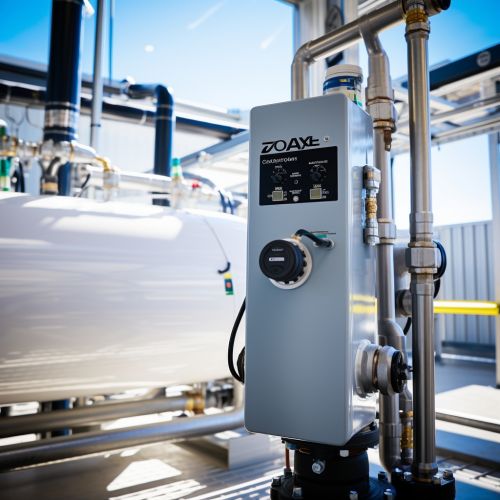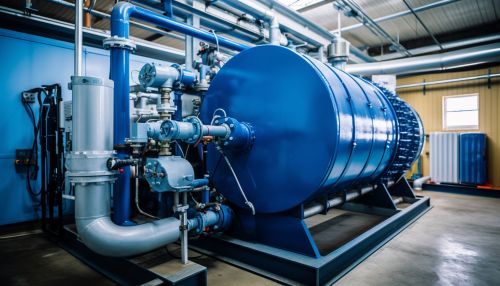Advanced Oxidation Processes
Introduction
Advanced Oxidation Processes (AOPs) are a set of chemical treatment procedures designed to remove organic and inorganic materials in water and wastewater by oxidation through reactions with hydroxyl radicals. These hydroxyl radicals are highly reactive and non-selective, enabling them to oxidize a wide range of pollutants in the water.
Principles of Advanced Oxidation Processes
The primary principle of AOPs is the production of hydroxyl radicals. These radicals are generated through the reaction of an oxidant such as ozone, hydrogen peroxide, or a photocatalyst with ultraviolet light. The hydroxyl radicals produced are extremely powerful oxidants that react with a wide range of organic compounds, breaking them down into smaller, less harmful compounds or completely mineralizing them to carbon dioxide and water.
Types of Advanced Oxidation Processes
There are several types of AOPs, each utilizing different oxidants and/or catalysts to generate hydroxyl radicals.
Ozone-Based AOPs


Ozone-based AOPs use ozone as the primary oxidant. Ozone is a powerful oxidant on its own, but when combined with ultraviolet light or a catalyst such as hydrogen peroxide, it can generate hydroxyl radicals. Examples of ozone-based AOPs include Ozone/UV, Ozone/Hydrogen Peroxide, and Ozone/Titanium Dioxide.
Hydrogen Peroxide-Based AOPs
Hydrogen peroxide-based AOPs use hydrogen peroxide as the primary oxidant. Like ozone, hydrogen peroxide can generate hydroxyl radicals when combined with ultraviolet light or a catalyst. Examples of hydrogen peroxide-based AOPs include UV/Hydrogen Peroxide and Fenton's Process.
Photocatalytic AOPs
Photocatalytic AOPs use a photocatalyst, typically titanium dioxide, to generate hydroxyl radicals. When the photocatalyst is exposed to ultraviolet light, it generates hydroxyl radicals that can oxidize organic compounds. Examples of photocatalytic AOPs include UV/Titanium Dioxide and Photo-Fenton Process.
Applications of Advanced Oxidation Processes
AOPs have a wide range of applications in water and wastewater treatment. They are particularly effective for the removal of persistent organic pollutants, such as pesticides, pharmaceuticals, and industrial chemicals, that are not easily removed by conventional treatment methods. AOPs are also used for the disinfection of water, the removal of color, odor, and taste compounds, and the oxidation of inorganics such as iron and manganese.
Advantages and Disadvantages of Advanced Oxidation Processes
Like any treatment process, AOPs have their advantages and disadvantages.
Advantages
One of the main advantages of AOPs is their ability to degrade a wide range of pollutants, including those that are resistant to conventional treatment methods. AOPs are also capable of completely mineralizing organic pollutants to carbon dioxide and water, eliminating the need for further treatment. Additionally, AOPs do not produce harmful by-products, making them an environmentally friendly treatment option.
Disadvantages
On the downside, AOPs are generally more expensive than conventional treatment methods due to the cost of the oxidants and/or catalysts used. They also require a high energy input, particularly for processes that use ultraviolet light. Furthermore, the effectiveness of AOPs can be influenced by water quality parameters such as pH, temperature, and the presence of other substances that can react with hydroxyl radicals.
Future Perspectives
With increasing concern over water pollution and the limitations of conventional treatment methods, the use of AOPs is expected to grow in the future. Research is ongoing to develop more efficient and cost-effective AOPs, with a focus on the use of renewable energy sources for the generation of hydroxyl radicals.
